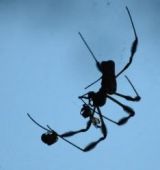- Forum
- General Discussion | Introductions | Off Topic Forum
- Photography General Discussion
- 50mm suppose to be equal to human vision
50mm suppose to be equal to human vision
-
 Topic Author
Topic Author
- Vladimir
- Photography Hooked
-
- Nikon D300
- Followers: 138
- Posts: 606
-
Points:
2547
-

- Baydream
- Moderator
-
- Canoni/60D/70D/5DmkIII
- Followers: 388
- Posts: 11185
-
Points:
7280
Post #154015
Please, use the SEARCH FORUMS options for many more discussions of this subject.
Shoot, learn and share. It will make you a better photographer.
fineartamerica.com/profiles/john-g-schickler.html?tab=artwork
-
 Topic Author
Topic Author
- Vladimir
- Photography Hooked
-
- Nikon D300
- Followers: 138
- Posts: 606
-
Points:
2547
Post #154017
Baydream wrote: The 50mm equation is based on 35mm film cameras and full sensor digitals. The 32-35mm is approximate for crop (APS) sensor digitals. The equation is different for medium and large format cameras.
Please, use the SEARCH FORUMS options for many more discussions of this subject.
I did, matter of fact I usually always use it. There are 1216 results for 50mm.
-

- Dori
- Moderator
-
- Nikon D5000
- Followers: 167
- Posts: 7371
-
Points:
12
Post #154054
I have older viewfinders and rangefinders that have shorter than 50mm (often 45mm) and if they have interchangeable longer lenses available they're 85-90mm but I don't know how the lens length was determined. Or why it changed to 50mm.
Sharon
-
 Topic Author
Topic Author
- Vladimir
- Photography Hooked
-
- Nikon D300
- Followers: 138
- Posts: 606
-
Points:
2547
Post #154055
icepics wrote: I've read (and don't remember where) that 85/90-100mm was supposed to be comparable to the distance you see naturally. I also read something about how 50mm became standard and that it was apparently somewhat arbitrary (like companies making cameras just decided for no particular reason that 50mm would be the standard).
I have older viewfinders and rangefinders that have shorter than 50mm (often 45mm) and if they have interchangeable longer lenses available they're 85-90mm but I don't know how the lens length was determined. Or why it changed to 50mm.
I have not heard this before. So 85 to 100mm is the magic number. Boy was I way off. Might need to try this.
-

- Nick Show
- New Kid On The Block
-
- Nikon d300s
- Followers: 4
- Posts: 49
-
Points:
0
Post #154069
Vladimir wrote:
Baydream wrote: The 50mm equation is based on 35mm film cameras and full sensor digitals. The 32-35mm is approximate for crop (APS) sensor digitals. The equation is different for medium and large format cameras.
Please, use the SEARCH FORUMS options for many more discussions of this subject.
I did, matter of fact I usually always use it. There are 1216 results for 50mm.
Wow that's alot of posts for just one lens. I would say the 50mm
-

- Nick Show
- New Kid On The Block
-
- Nikon d300s
- Followers: 4
- Posts: 49
-
Points:
0
Post #154070
Vladimir wrote:
icepics wrote: I've read (and don't remember where) that 85/90-100mm was supposed to be comparable to the distance you see naturally. I also read something about how 50mm became standard and that it was apparently somewhat arbitrary (like companies making cameras just decided for no particular reason that 50mm would be the standard).
I have older viewfinders and rangefinders that have shorter than 50mm (often 45mm) and if they have interchangeable longer lenses available they're 85-90mm but I don't know how the lens length was determined. Or why it changed to 50mm.
I have not heard this before. So 85 to 100mm is the magic number. Boy was I way off. Might need to try this.
People tend to use 85mm more for portraits. Although you do hear many photographers using the 50mm. I say, if we want something that is more equal to the human vision, they need to start developing cameras for the eye.
-

- Henry Peach
- Apprentice
-
- I currently use a 5DII or Sony Nex-3 most of the time.
- Followers: 50
- Posts: 2925
-
Points:
16
Post #156967
Vladimir wrote: I've come to a conclusion. I don't think 50mm is equal to human vision, it seems to tight if you ask me. I think 35mm would be closer to what the human eye see's?
It seems to me that cameras and lenses aren't very similar to the way my eyes and mind work. Studying how they are different has helped my photography quite a bit, because there is often a difference between the scene in my mind and the scene as it will be captured by the camera and rendered in 2D.
www.cambridgeincolour.com/tutorials/cameras-vs-human-eye.htm
-

- Justin Black
- Vendor
- Nikon: D810; Fuji: X100s, X-Pro1, XE-2
- Followers: 100
- Posts: 39
-
Points:
2001
Post #157006
Many photographers find their own "normal," whether that be Gary Winogrand's 28mm wide-angle, Cartier-Bresson's 50mm, Salgado's 60mm, or a wildlife photographer's big tele.
Personally, I find that when I review the metadata of images I've made with my 24-70 zoom on Nikon FX format cameras, it seems the "normal" focal length I'm most comfortable with is 44mm. For whatever reason, I make far more images at 44mm than at any other focal length in the 40mm to 60mm range.
I also find it to be a very useful practice to pop a 50mm (or any other single prime lens, for that matter) on the camera and just spend some time using that single focal length. It's a good way to getting a better handle on finding the optimal camera position for the image in question, which is much more important than using a particular lens.
Justin Black
Visionary Wild – workshops and travel for the passionate photographer
visionarywild.com
Post #157111
Sharon
- Forum
- General Discussion | Introductions | Off Topic Forum
- Photography General Discussion
- 50mm suppose to be equal to human vision
Latest Reviews
The Panasonic G9 II is a 25.2-megapixel micro four thirds camera with numerous features that make it punch out of its weight class, like 779 AF points, 5.8K video, and weather sealing.
The Fujifilm XT5 is a 40MP mirrorless camera capable of 6.2K video at 30p. With those specs, it’s an ideal choice for photographers needing a camera to pull double duty for imaging and video.
The Canon EOS R100 is an entry-level mirrorless camera introduced in 2023. But just because it’s an entry-level camera doesn’t mean it’s a bare-bones camera. Find out why in this review!
Nikon’s retro-looking Nikon Zfc is anything but retro. Under its classic body is a host of features and amenities that make it a worthwhile compact mirrorless camera for 2024.
Forum Top Posters
-
1Garbo 4 posts
-
2TCav 4 posts
-
3Ruby Grace 3 posts
-
4Kenta 3 posts
-
5Street Shark 3 posts
-
6Moe 2 posts
-
7Sassy Girl 2 posts
-
8CharleyL 2 posts
-
9Colorado Mike 2 posts
-
10Chester Foster 2 posts
Latest Articles
The Panasonic G9 II is a 25.2-megapixel micro four thirds camera with numerous features that make it punch out of its weight class, like 779 AF points, 5.8K video, and weather sealing.
Cinematic photography is an interesting genre that combines photographic and videographic skills along with effective storytelling techniques. The result? Highly impactful images!
Newborn photography requires skill, the right gear, and a lot of patience. This beginner’s guide discusses critical topics that will help you be more prepared for before, during, and after the shoot.
To fill the frame means to expand the footprint of the subject in your shot. Get in close, zoom in, crop the image, or use other techniques to bring the subject to the forefront.
With these simple yet effective beginner photography tips, you can avoid some of the common mistakes beginners make and get improved results with your images.
Urban photography is a genre showcasing features in urban settings. You can photograph people, architecture, mass transit, and many other subjects. Learn how to do so in this guide!
The Nikon D850 might be an older DSLR, but it was ahead of its time when it debuted in 2017. That means it still has plenty of firepower to compete with today’s powerful mirrorless cameras.
The best beginner camera isn’t the same for everyone. That means having choice is of the utmost importance. In this guide, explore five excellent beginner camera options for 2024 and beyond.















